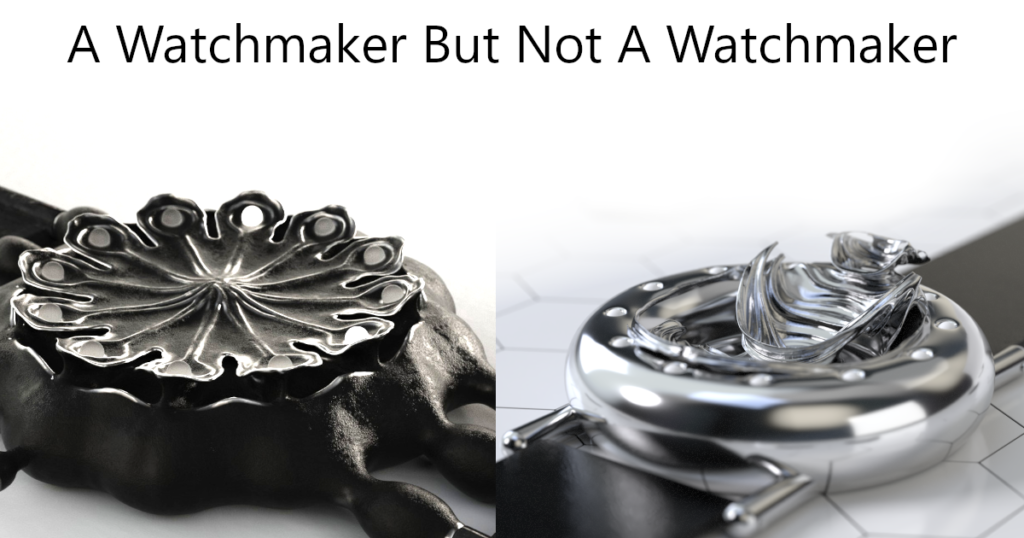
Sections of this article:
Differences Between Art, Design And Engineering
Introduction
Anyone who makes watches is, by definition, a watchmaker, right? . . . well, sort-of, but not exactly!
The way the word “watchmaker” is often used has a more subtle definition, often meaning someone who makes watches which are at least partly mechanical, by hand. The official definition is much wider . . .
Watchmaker officially refers to people who service watches without making any of the parts themselves, since the majority of watches are mass-produced in factories these days, as well as referring to people who actually make or design parts of watches or whole watches. This use of the word harks back to earlier times when watches were all made by hand, so the skills and understandings needed to repair watches were the same as those needed to make them. So I am not exactly “a watchmaker” by that definition, since I have no idea how to repair watches made by anyone else!
I don’t make mechanical watches, in the sense of making things like gears and springs by hand, and I don’t really “design” timepieces either, although designers are involved in various parts of the creation of our watches after I’ve created the aesthetics of the watch. What I do is, I create pieces of three dimensional art:
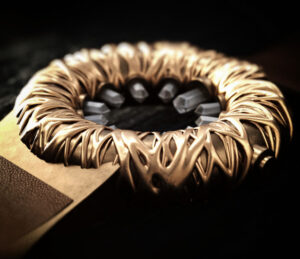
. . . which also tell the time. I know a lot of watches are advertised as “pieces of art” these days, and I’ll look at that, and how collaborations between watchmakers and artists work, below, but in reality (rather than in the alternate universes imagined by marketing) there are significant differences between art and design, which I’ll look at in this article.
So in some ways I am not exactly a watchmaker. Yet what I find myself creating are watches, although they are further from conventional watch influences than anything else I’m aware of . . . they still tell the time, and are worn on the wrist in the normal way (although people who would be described as “normal” would be unlikely to wear such unique and creative watches).
And I’m creating watches, not bracelets, jewelry, or sculptures, although my creations certainly align with the concepts of art jewelry rather than the fine jewelry influences found in most watches, and are visually much more about the fine art concept than the influences of engineering or design, yet my creations do tell the time.
These days, with some watches that don’t tell the time, and others where the main point of the engineering is its aesthetics, limits are being extended and definitions blurred. Change is the only constant, and happens at more rapid rate than ever, yet the concepts behind the real influences on most watches are still historical, even when the watches look very contemporary, which I’ll also delve into, below.
Note . . . I only use watch images with permission from the watchmaker (unless the photos are public domain or creative commons), so some of the watches I present here might be lacking an image.
Origins Of Our Brand
The origin of the UnconstrainedTime brand was my invention of our unique minimal time-display concept and the creative freedom it confers, allowing me to explore far beyond the influences of even the most unusual watches by other brands.
My experience was in fine art and cutting-edge contemporary music. I have no experience as a watchmaker, was not even a watch enthusiast, and, to be honest, a lot of big name watches don’t appeal to my aesthetic interests, although a minority, typically the more unusual ones, certainly do.
Not having any background in the world of watches can be seen as one of the main advantages which allowed me to create very unique UnconstrainedTime watches.
Most watchmakers are people who did very well at the process of learning how to be a watchmaker. Being seen as being good at learning how to be anything involves agreeing with the way things are, because that’s the perspective from which how good you are at learning the subject, is judged. Anyone who doesn’t align with the way things are, is not allowed to progress to the more advanced levels of such education, where you are encouraged to push the boundaries slightly. This applies almost as much to the information “self-taught” individuals use to learn . . . it’s not possible to learn from the past without being influenced by the history of that subject (even if you turn your back on that history).
My watch creations are not really pushing the boundaries of existing watch design, they are approaching the whole concept from a very different angle. I can be seen as an artist who is creating artworks that also tell the time, rather than a watchmaker influenced by other fields.
I guess just from looking at them, it is obvious that there is something very different about the whole conceptual basis of my watch creations . . . now you know why!
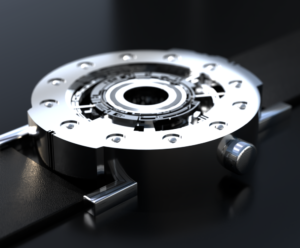
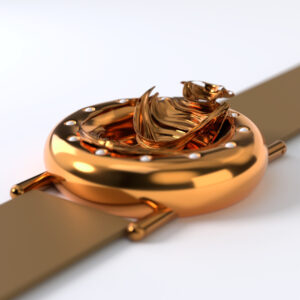
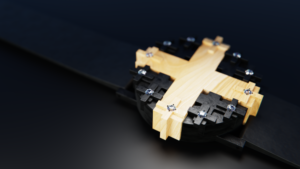
Time Display Archetypes
Looking in more detail at our unique time-display, it’s uniqueness and simplicity allow a different conceptual focus than most watches . . .
Conventional time-displays, a dial with hands, or a digital display with numerals of whatever kind, are very strong archetypes. Numbers are a very fundamental part of how humans function within civilization, and knowing the time of day has, or several hundred years, been an extremely important part of how people function in societies. Which is a big reason that watches are more important than bracelets . . . the sub-conscious references and context which are inevitable when looking at any object with a dial and hands, are extremely powerful.
A circle of points (such as the UnconstrainedTime time-display) is not an archetype in the same way. And that allows the special focus, which is an essential part of the concept of art, to be on the whole of an UnconstrainedTime watch, as an artwork, rather than there being some art, plus a watch, as is the case with all the collaborations I’ve seen between watchmakers and artists . . . if you saw the watch without the art on it or in it, the timepiece itself would not remind you of that specific piece of art to any significant extent. So the watch and the art are, to a large extent, separate.
With UnconstrainedTime watches there is no separation between the art and the watch. The art is the watch, the watch is the art.
For example, my Poppy Seed Pod watch:
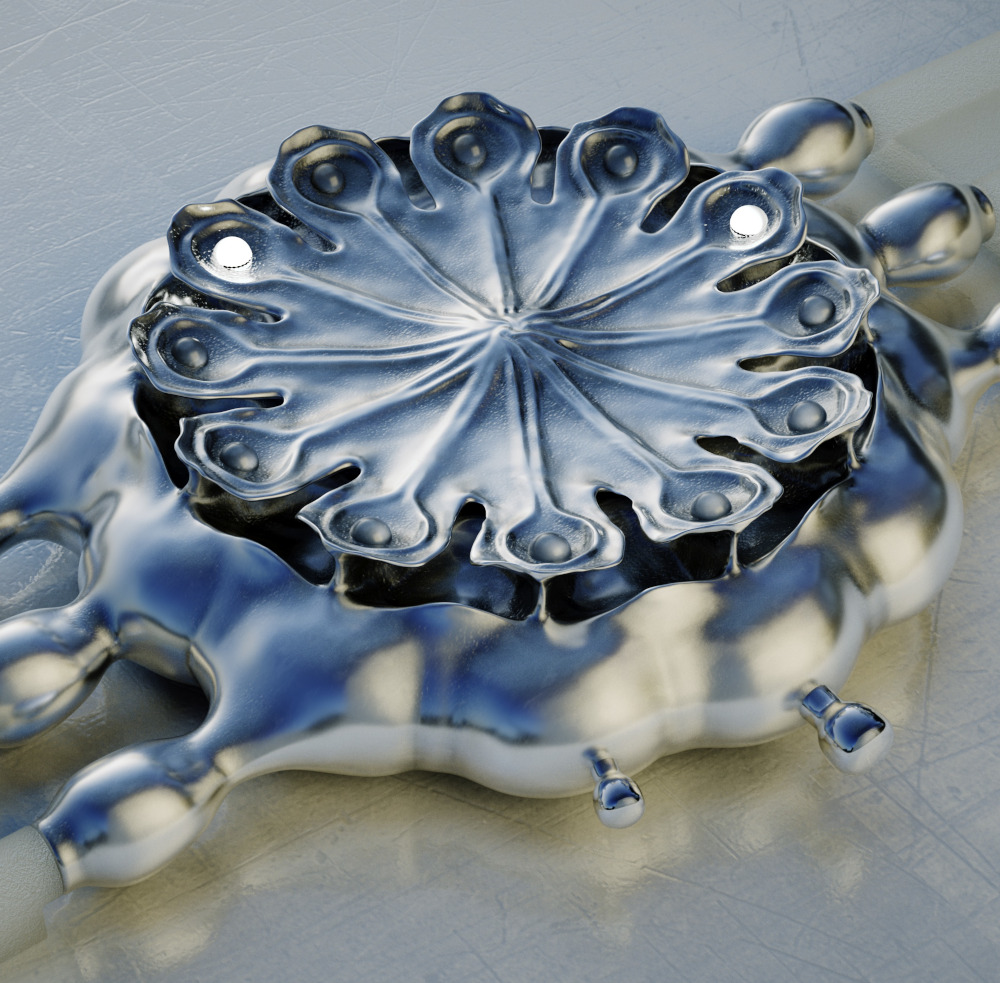
The whole of the case/body of the watch is based on the forms, texture and concepts from poppy seed pods. It’s not a specific element about poppy seed pods inside, or outside, a watch case which is otherwise standard . . . there is no watch case separate from the organic influences, no hands stuck on something they don’t relate to. There are little or no influences from watchmaking, engineering or fine jewelry (more on those, below).
Even the time-display very much belongs, it makes sense as part of the design . . . and there are no watch hands or marked dial with all the inevitable sub-conscious references to clocks and being on time. Which allows the exploration of the poppy seed pod influences to be the main focus of the watch.
Influences On Watchmaking
Not many watches have extended into areas other than engineering influences and/or the simple geometric shapes that fine jewelry is based on. Not that I’m saying there’s anything wrong with those influences, of course . . . many watches are rightly proud of their relationship with the history and evolution of watchmaking. But UnconstrainedTime is doing something different from that.
There are a lot of unusual watches which are extraordinary and undeniably beautiful. Here are a few examples . . . look at each one and see what the real influences are behind the design concepts of each:
The Eone Bradley watch:
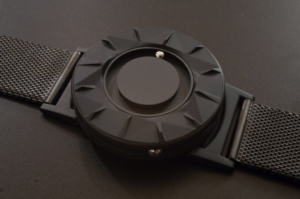
. . . can be read in complete darkness, thanks to a unique tactile time-display which uses two ball-bearings moved by magnets.
The HM9 Sapphire Vision from MB&F:
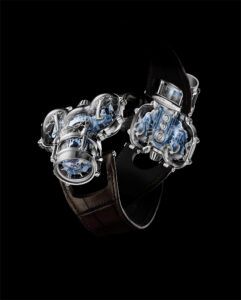
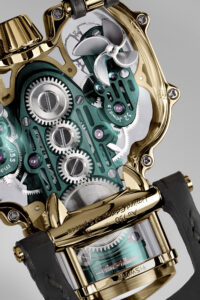
. . . is visually extraordinary as well as being technically impressive.
As shown in the above examples, most unusual watches today have engineering as their main aesthetic influence.
There are some recent watches which have influences from one specific area, and that is art jewelry. I go into detail in other posts about what art jewelry is and how it relates to a bigger revolution that no-one seems to have noticed, but to put it very briefly, fine jewelry uses simple geometric forms and smooth polished surfaces and is design work. Art jewelry often uses complex, organic, rough or broken forms and surfaces, and is art rather than design (I’ll briefly explain the main differences between art and design, below).
Here are some examples of watches with some degree of art jewelry influence:
The Cartier Crash Tigrée watch has strong art-jewelry influence as well as some fine jewelry influence while retaining conventional watch hands.
The DB28 XP Météorite by De Bethune:
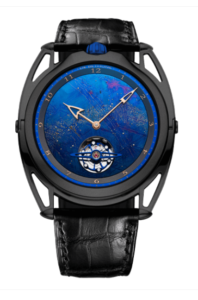
. . . has a beautiful dial with a significant art-jewelry influence of irregular marks, with conventional case and hands.
Blancpain The Great Wave is a gorgeous art-jewelry dial inside a conventional fine jewelry watch case.
Art jewelry influence can also be seen in the way Holthinrichs watches proudly display the rough 3D printed texture on some parts of their watches:
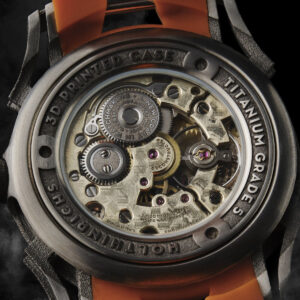
Differences Between Art, Design And Engineering
Engineering and design are about solving problems in the real world. Engineering is defined as “the application of science and math to solve problems.” Engineering can certainly be creative, but that’s not the same as art.
Engineering is about functionality, even if that functionality is not necessary practically useful functionality. For example, there are many interesting and innovative complications on watches currently. While some of them are useful, such as tide indicators which are of real value to people sailing yachts, a lot of the impressive feats of engineering on watches these days are for aesthetics or as impressive accomplishments in their own right . . . while it might be fascinating and impressive to have a watch which shows the exact locations of the planets, that’s not really making much practical difference to the lives of most people. But watch complications still have functions, and they still produce practical results, so they are still engineering. An example is the Christopher Ward Bel Canto:
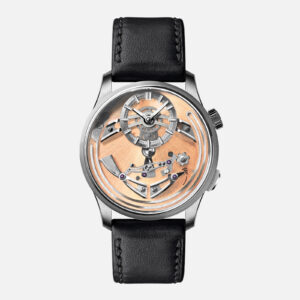
. . . (shown above in Rosa gold) which is an unusual looking watch for this brand. Every 60 minutes, to mark the hour, a ‘hammer’ strikes a chime which is a steel spring around the edge of the dial. The Grade-5 titanium case improves the quality of the sound, as well as combining durability with light weight
Art, on the other hand, puts aesthetics first, and either has no practical function (such as with the Mona Lisa, below), or obviously puts the aesthetics before any functionality:
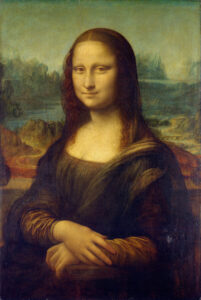
Watches, for most of their history, while they often included decorations, their main point was that they displayed the time. The earliest complication was a practical one . . . the date. These days, with everyone having the exact time, date and many additional functions on their smartphone, the focus of many watches has evolved to be more about displaying the individual stylistic choices of the wearer, as well as the uniqueness and impressive accomplishments of the creativity in its watch design. Some watches are becoming closer to some of the characteristics of art, and further from the practicalities of design.
Creativity is about producing new results. That can be in engineering or other types of design, as well as in the arts. The difference between design and art is partly about the focus. The focus of design is practical functionality. The focus of art, especially fine art, is aesthetics.
Art is personal
The other main difference is that art is personal. It is done by an individual, and produces results that are unique to that individual. Design and engineering, on the other hand, can certainly produce creative and innovative results, but the result is not about the person who invented it, and someone else could have invented something indistinguishable, and the result would be equally valid (despite marketing sometimes putting the focus on the individual designer). A copy of an artwork is not that artwork, even if it were indistinguishable form the original, although the fine art print concept allows for a relatively small limited edition.
While there are collaborations between artists, art is always personal. While design can be done by an individual, it is much more often done by groups of people, and even if it is done by an individual, the results are about the functionality more than they are about the individual
So art is fundamentally about personal exploration and engineering is not personal . . . someone else could have come up with the same solution and it’s more about the solution than the person.
Most people who try to say that engineering or design are “art” do so by saying they are creative (which is correct) then misdefining creativity as being the same as art. Both art and design involve creativity, but that definitely doesn’t mean that all creativity is art.
Engineering and design usually has a predefined goal, but if there’s a predefined goal then it’s not the fine art process, which is about getting to a point beyond what one could have imagined when one started . . . a personal exploration into one’s reality and of the relationship between oneself and the world one experiences in, resulting in something which is not just new to others, but also new to oneself (not just from what already exists in one’s imagination, which is what design uses).
For more on this fascinating area, see my blog post on “Are watches art?“
Most of what you see of an UnconstrainedTime watch is about aesthetics, and not practical functionality. Looking again at the example of our Poppy Seed Pod watch, the influences of poppy seeds are not an added surface decoration on a dial, they are not on specific parts added to an otherwise conventional watch. The whole of the watch is much more about the freely chosen aesthetics than anything else, which is one of the main characteristics of fine art.
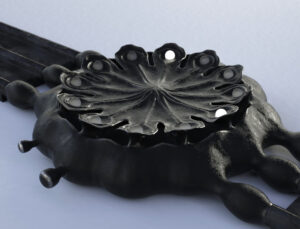
Each of the UnconstrainedTime watches on our website, as I write this article, is an aesthetics focused creative exploration by myself, and they are definitely personal (i.e. they precisely fit the definitions of art):
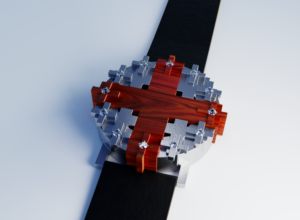
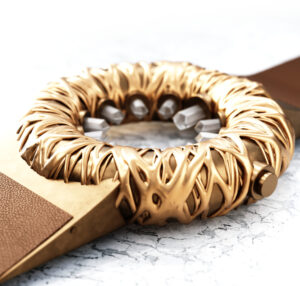
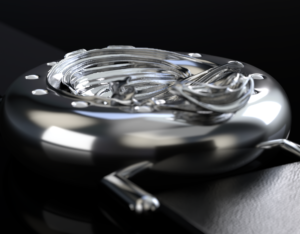
Don’t miss our launch!
. . . make sure you subscribe to our Priority List for notifications.
What is your definition of “a watchmaker”? Let us know your opinion, in the comments below or on our social media.

Leave a Reply